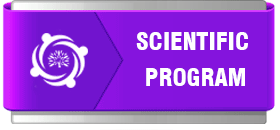
Deepak B. Anap
Maharashtra University of Health Sciences,India
Title: Effectiveness of sustained natural apophyseal glides and Maitland’s mobilization in facet joint syndrome: a randomized control trial
Biography
Biography: Deepak B. Anap
Abstract
Background: Low back pain is a major cause of disability affecting performance at work. One of the hidden and less studied culprit of chronic low back pain is facet joint syndrome. Currently, there is paucity in the literature regarding the effectiveness of physiotherapy techniques in treating facet joint syndrome. Hence this trial was undertaken to study the effectiveness of passive accessory intervertebral movement (PAIVM) such as Maitland’s mobilization and passive sustained accessory mobilization, such as Mulligan’s technique (SNAGs) along with conventional physiotherapy intervention as compared to conventional physiotherapy in facet joint syndrome.
Method: A single-blind, randomized control trial was conducted on participants diagnosed with lumbar facet joint syndrome. Outcome measures for the study were Visual analogue scale (VAS), Modified oswestry disability questionnaire (MODQ), Pressure pain threshold(PPT), Back muscle endurance, Spinal flexion and extension ROM. After baseline assessment, participants were randomly assigned to Group A which received Mulligans Sustained natural apophyseal glides (SNAG’S), therapeutic ultrasound (Cont.1MHz, 1.5W/cm2) and spinal exercises, Group B received Maitland’s spinal mobilization (PA Glides), therapeutic ultrasound and spinal exercises and Group C received therapeutic ultrasound and spinal exercises for the period of 2 Wks. Follow up was done at 3rd wk.
Result: Total 186 participants were analyzed using Kruskal-Wallis test and Dunn-Bonferroni post hoc Test.K-W test showed a significant difference in all three groups in terms of VAS, MODQ, PPT and Spinal ROM. Post Hoc test showed the significant difference (p <0.001) between SNAGs and Maitland Group in terms of flexion and extension ROM and there was no significant difference (p>0.05) between SNAGS and Maitland’s manual therapy groups in terms of pain, MODQ and PPT.
Conclusion: SNAGs is more effective in improving spinal ROM, however SNAGs and Maitland’s spinal mobilization are equally effective in reducing pain, disability and improving pressure pain threshold. Back muscle endurance improved in all the three groups, but the difference was not statistically significant.
Key words: Facet Syndrome, Sustained Natural Apophyseal Glides, Maitland’s Mobilization, Pressure pain threshold

